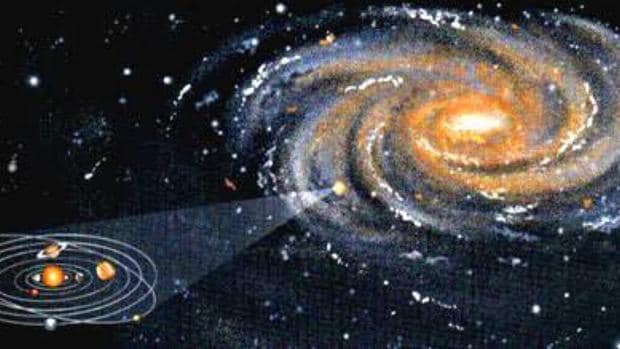 The vast majority of alien civilizations that have ever flourished in our galaxy are probably dead. That is the extraordinary and discouraging conclusion of a study carried out by researchers at the California Institute of Technology and NASA's Jet Propulsion Laboratory, which appeared just a few days ago on the arXiv prepublication server.
The vast majority of alien civilizations that have ever flourished in our galaxy are probably dead. That is the extraordinary and discouraging conclusion of a study carried out by researchers at the California Institute of Technology and NASA's Jet Propulsion Laboratory, which appeared just a few days ago on the arXiv prepublication server.
For their work, the scientists used an expanded version of the famous Drake equation, which in 1961 tried to determine the probabilities of finding extraterrestrial intelligences in our galaxy and which after being popularized by Carl Sagan in his unforgettable series "Cosmos" has suffered, since then, numerous updates. The new study, in fact, is much more practical than the original, and tells us where and when life is most likely to occur in the Milky Way. But it also identifies what scientists consider to be the most important factor affecting its ability to endure: the tendency of intelligent creatures to self-annihilate.
Using complex statistical models, the researchers found that the best time for intelligent life to emerge in the Milky Way was about 8 billion years after its formation, and that many of those civilizations could have been "only" 13,000 light years away from the Milky Way. galactic center, just half the distance from Earth, where humans emerged about 13.5 billion years after the formation of the Milky Way.
«Since Sagan's time – explains Jonathan H. Jiang, one of the authors of the study – there has been a lot of research. In particular, from the Hubble and Kepler space telescopes, we have a lot of knowledge about the densities of gas and stars in the Milky Way, as well as the rate of formation of new stars and planets... and the rate of occurrence of supernova explosions. In fact, we know some of the numbers that in Sagan's time were still a mystery.
In their work, the study authors analyzed a wide variety of factors capable of influencing the development of life, such as the prevalence of Sun-like stars with Earth-like planets, the frequency of supernovae emitting deadly radiation, the probability and the time necessary for intelligent life to evolve and, of course, the more than likely tendency of advanced civilizations to self-destruct.
Taking all these factors into account, the researchers found that the probability that life based on the elements we know will emerge and consolidate peaks about 13,000 light years from the galactic center about 8 billion years after the formation of the galaxy. galaxy.
The Earth, as has been said, is about 25,000 light years from the center of the Milky Way and human civilization emerged almost 13.5 billion years after its birth. In other words, in terms of galactic geography, it is likely that humans are a "frontier civilization" and relatively late with respect to the bulk of the intelligent civilizations in the galaxy, which would mostly be grouped around that band of 13,000 light years from the center, where Sun-like stars are most abundant.
But the study, as mentioned, also considered the factors that could have ended those civilizations, such as exposure to radiation, the interruption of evolution due to an asteroid impact or other natural catastrophe and, above all, the tendency of intelligent life to self-annihilate, whether through climate change, technological advances, or war.
All of the above suggests that most of the civilizations that still exist in the Milky Way are probably young. The rest would have “eradicated themselves,” so that most of the civilizations that once existed in the Milky Way would have already irretrievably disappeared due to their own self-destruction.
But how often do civilizations "commit suicide"? This is the most uncertain variable in the article, but also the most important when determining how widespread intelligent life may be outside our planet. According to the study, even an extremely low probability of a given civilization being wiped out at a given time, for example by a nuclear holocaust or runaway climate change, would mean that the vast majority of civilizations that have existed on the Way Láctea would be gone forever.
"While no evidence explicitly suggests that intelligent life will eventually annihilate itself," the researchers write, "we cannot exclude a priori the possibility of self-annihilation." Without going any further, the possibility that war or climate change, among other scenarios, will inevitably lead to the complete destruction of the human race is something that is already supported by numerous studies, such as those by Nick in 2002. , Webb in 2011, Billings in 2018 or Sotos in 2019.
